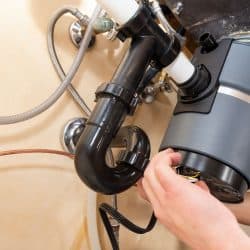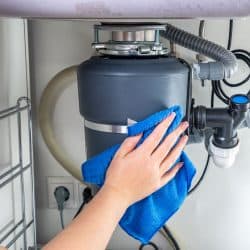Since garbage disposals process so much waste, it's no wonder that they can start to smell over time. But how do you clean a garbage disposal trap and drain to get rid of the odor? Let's take a look at how to do this below.
In order to clean your garbage disposal trap and drain, follow these steps:
- Remove the splash guard.
- Inspect garbage disposal for blockages.
- Pour 1/2 cup of baking soda into the drain.
- Pour 1 cup of vinegar down the drain.
- Wait 2-3 minutes.
- Pour 6 cups of boiling water down the drain.
- Place 2-3 cups of ice down the drain.
- Next, add a cup of iodized salt onto the ice.
- Turn on the cold water.
- Run the garbage disposal until the ice and salt are gone.
- Next, place small lemon slices in the garbage disposal.
- Run the garbage disposal with cold water until the lemon slices are gone.
By following these steps, you will completely clean every nook and cranny of your garbage disposal, leaving it smelling fresh and new! In this article, we will walk you through each step so that your garbage disposal will be clean in no time. In addition, we will answer other frequently asked questions about garbage disposals, so read on!
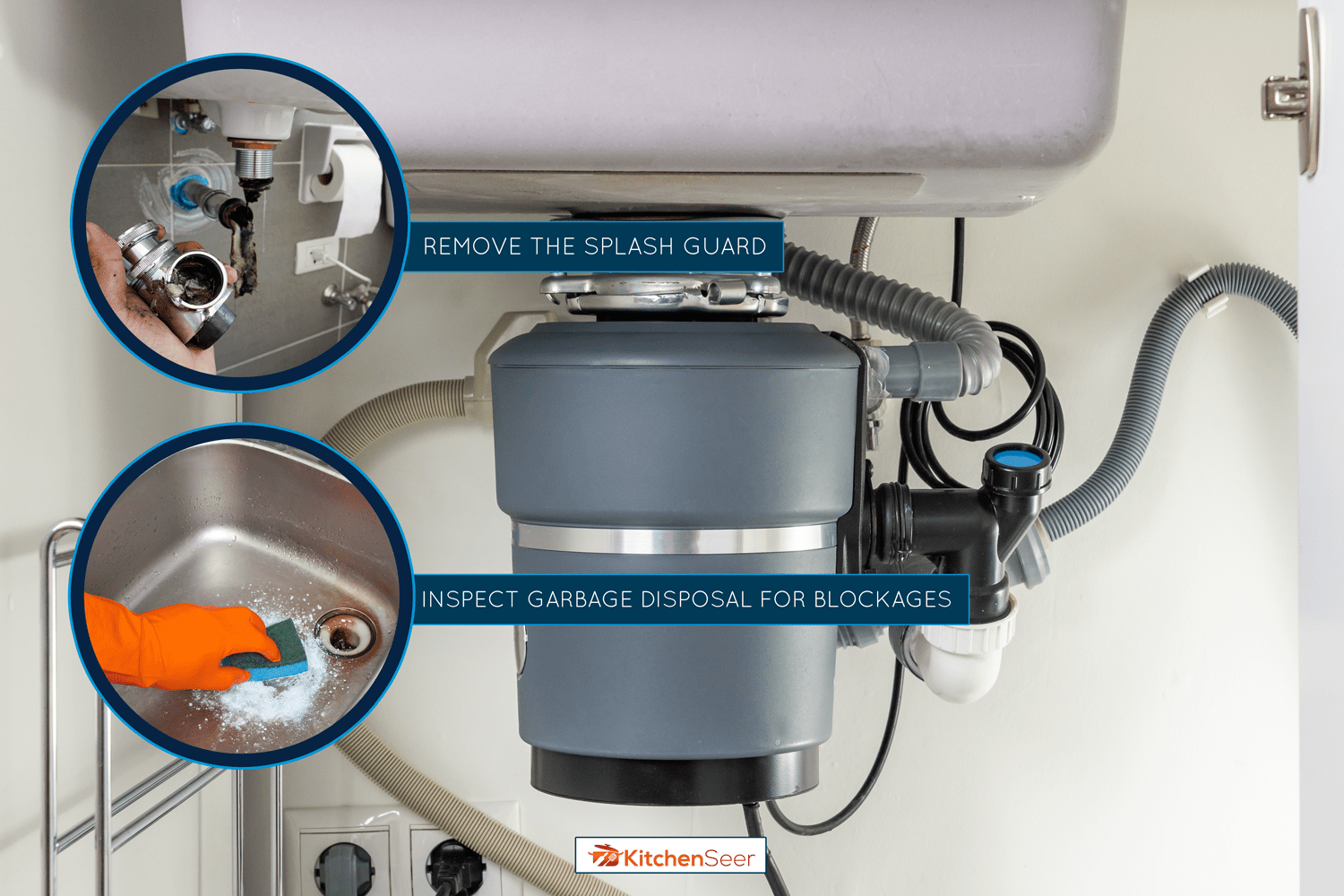
What's The Best Way To Clean A Garbage Disposal?
Like any household appliance, garbage disposals need to be cleaned regularly in order to prevent them from becoming smelly or clogged.
The disposal trap and drain can become full of food particles, grease, and soap scum over time, which can start to cause an odor. In addition, if the disposal is not cleaned regularly, it can become clogged with food waste and stop working altogether.
That's why it's important to clean your garbage disposal on a regular basis. The steps to cleaning and clearing a garbage disposal are actually quite simple and only take a few minutes to do.
Let's take a look at each step in detail:

Remove Splash Guard
First, you will need to remove the splash guard. The splash guard is the rubber or plastic piece that sits on top of the sink. You can remove it with your hands.
You might find that the splash guard has built up a lot of gunk on it over time. Let it soak in soap and water while you proceed to the next step.
Inspect Garbage Disposal For Blockages
Next, you will need to inspect the garbage disposal for blockages. If there are any items stuck in the blades, use a pair of tongs or pliers to remove them.
You can also use a plunger to try to dislodge any blockages. Simply place the plunger over the drain and pump it up and down a few times.
Pour Baking Soda Into Drain
Once you have removed any blockages, it's time to start cleaning the garbage disposal itself. First, pour 1/2 cup of baking soda into the drain. The baking soda will help to break down any grease or food particles that are stuck to the sides of the disposal.
Pour Vinegar Down Drain
Next, pour 1 cup of vinegar down the drain. The vinegar and baking soda will cause a bubbling reaction. This reaction will help to loosen any gunk that is stuck to the sides of the disposal.
Allow the mixture to sit for 2-3 minutes before proceeding to the next step.
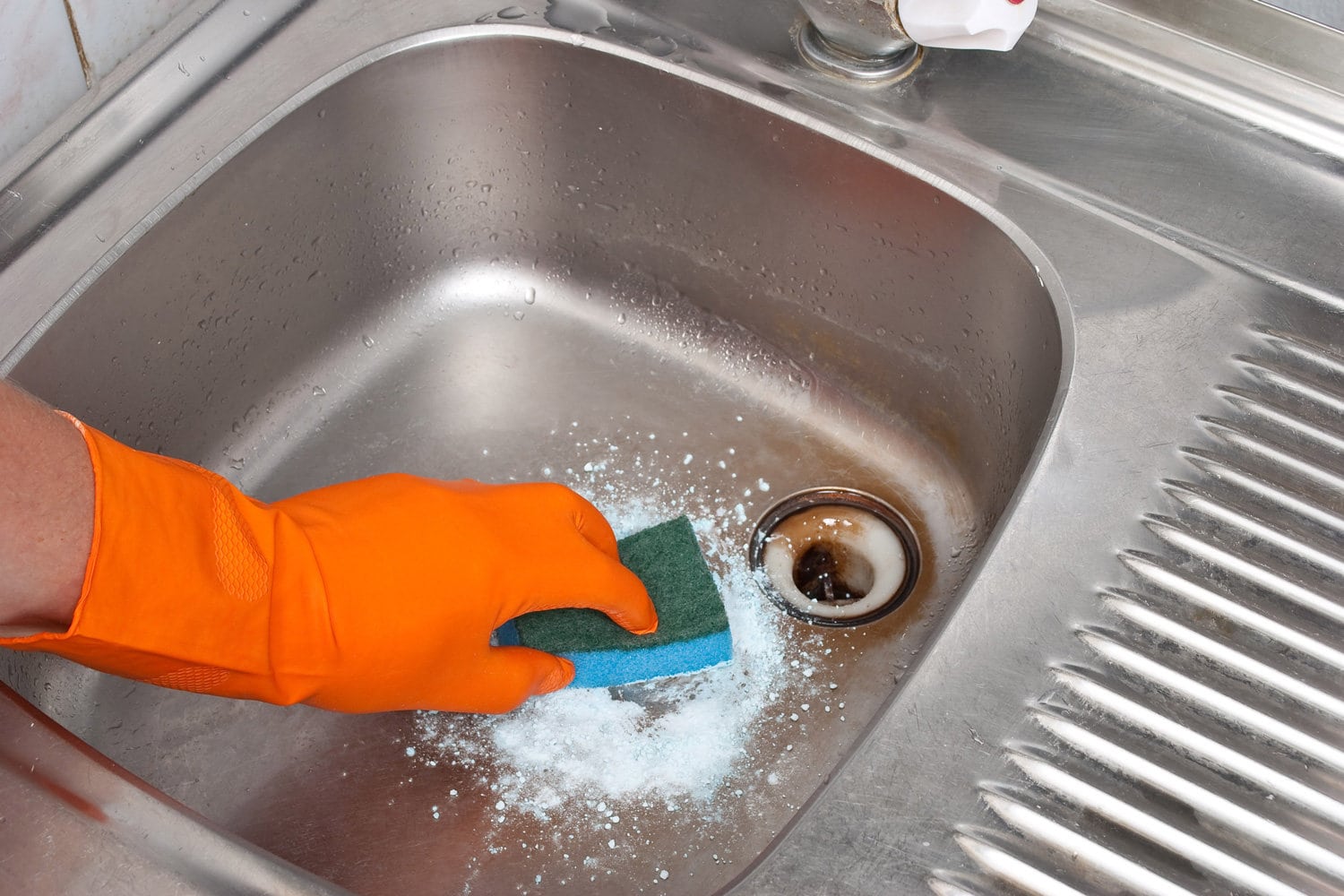
Pour Boiling Water Down Drain
After a few minutes, pour 6 cups of boiling water down the drain. The boiling water will help to flush out any remaining debris in the drain and trap it.
Place Ice Down Drain
Next, place 2-3 cups of ice down the drain. The ice will help to sharpen the blades on the garbage disposal. You can also add a cup of iodized salt onto the ice. The salt will act as an abrasive and help to remove any stuck-on gunk.
Turn On Cold Water
Turn on the cold water and run the garbage disposal until the ice and salt are gone. Cold water works best for this step because it will harden any grease or fats that are stuck to the sides of the disposal. Hot water will cause the grease to liquefy and can actually make the problem worse.
Place Small Lemon Slices Into Disposal
Now that we have the trap and drain clear, it's time to freshen up the garbage disposal. Place a small handful of lemon slices into the disposal and run it with cold water.
Let the lemon slices completely grind through before turning off the disposal. The lemon will help to remove any lingering odors and leave your garbage disposal smelling fresh and clean.
After completing these steps, you should notice a difference in how your garbage disposal sounds, smells, and functions. We recommend calling a professional plumber for assistance if you have any persistent problems.
What If My Garbage Disposal Is Clogged?
If your disposal didn't seem to clear up after following these steps, there may be a bigger issue at hand. If your garbage disposal is clogged, you can try a few different things.
First, try using a plunger to see if you can dislodge the blockage. If the plunger doesn't work, you can try using a plumbing snake. Simply insert the snake into the drain and turn it until you feel resistance. This will help to push through any clogs.
You can also remove the P-trap and clean it out. The P-trap is the curved pipe that connects the garbage disposal to the drain. To remove it, simply unscrew the two nuts that are holding it in place. Once you have removed the P-trap, you can clean it out with a brush and some hot water.
If you still can't seem to clear the clog, we recommend calling a professional plumber for assistance. Trying to force through a tough clog can damage your disposal and cause more problems down the line.
How Often Should You Clean A Garbage Disposal?
Prevention is a key step in keeping your garbage disposal clean and free of clogs. By cleaning your garbage disposal once a week to biweekly, you can help to prevent big clogs from forming.
It's also important to be mindful of what you put down your disposal. For example, avoid putting any hard seeds, bones, or fruit pits down the drain. In addition, grease and even fibrous vegetables like celery can cause problems.
It's also good to tell your family about what can and can not go down the disposal. By being proactive and educating those in your household, you can help to keep your disposal clean and free of clogs.
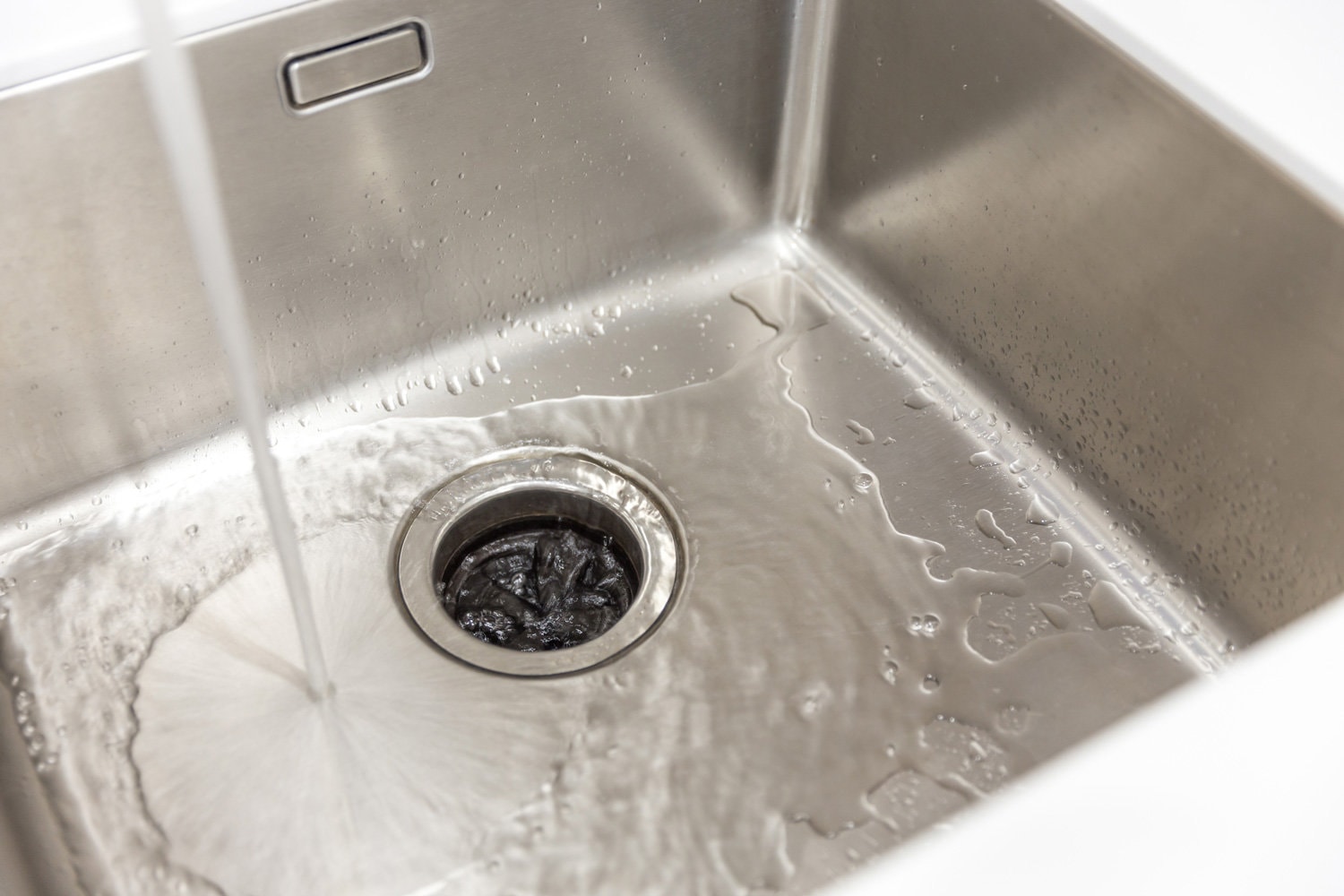
How Do You Know If Your Garbage Disposal Is Clogged?
A slow drain or backup is usually a tell-tale sign that your garbage disposal is clogged. In addition, if you notice standing water in your sink or a foul smell coming from the drain, these are also signs that there may be a blockage.
If your garbage disposal is making strange noises or vibrating, this can also indicate that there is something caught in the blades. Avoid using the disposal if you notice any of these signs. Instead, follow the steps above to clear the clog and get your disposal back up and running.
As we mentioned, cleaning your garbage disposal regularly is the best way to prevent clogs. However, even with regular cleaning, clogs can still happen from time to time.
By knowing how to spot the signs and taking action quickly, you can help to keep your disposal running smoothly for years to come.
Can You Pour Bleach Down A Garbage Disposal?
Harsh chemicals like bleach are not good for your garbage disposal or your plumbing. Over time, the chemicals can break down the pipes and cause damage to your home.
If you're looking for a natural way to clean your disposal, we recommend us Borax or baking soda. These ingredients are safe for your disposal and won't cause any damage to your plumbing.
To clean with Borax, simply put 2-3 tablespoons of Borax into your disposal and run it for 30 seconds with cold water. You may need to repeat this process a few times to completely clean your disposal.
What Is The Trap On A Garbage Disposal Used For?
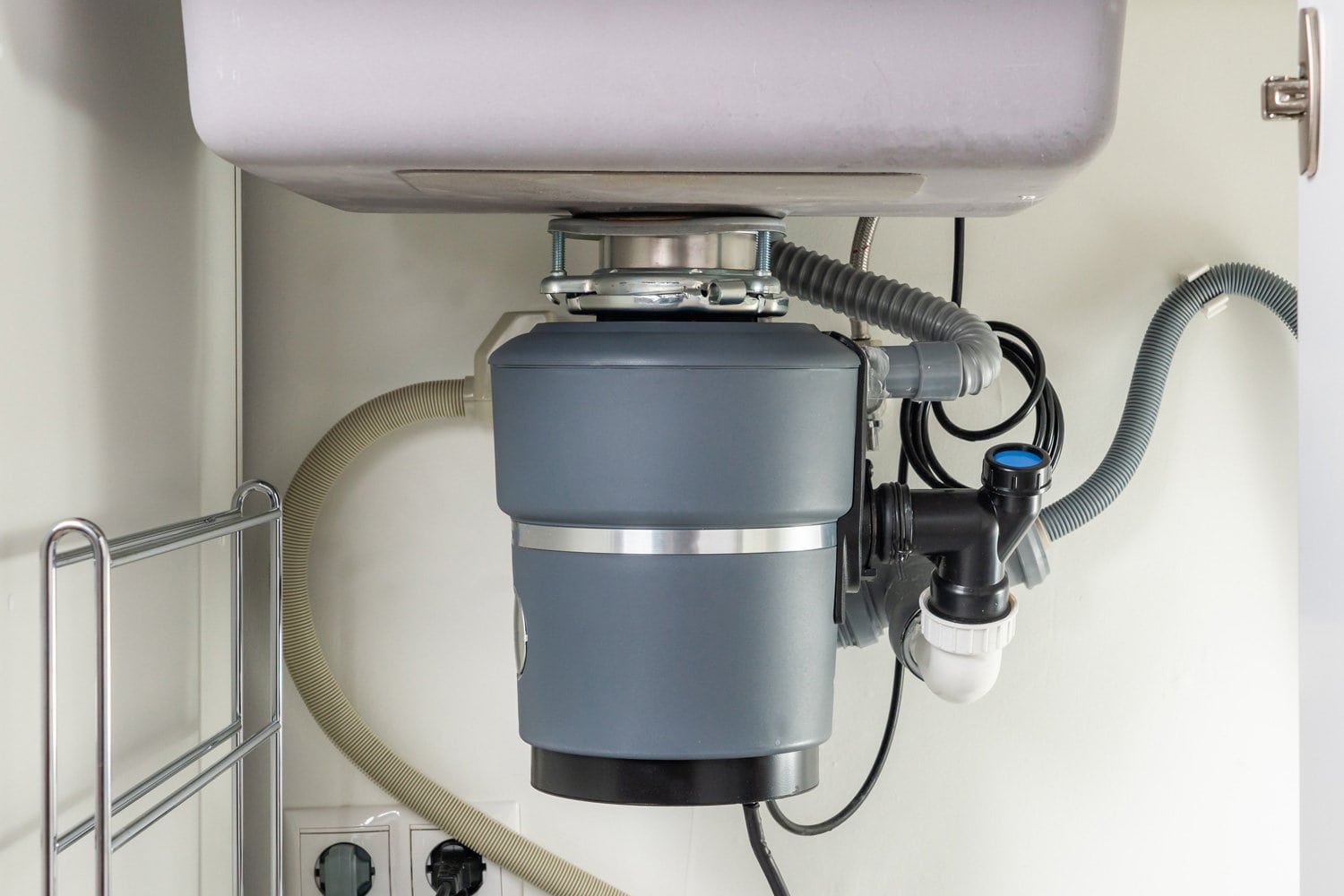
The point of the trap is to keep sewer gas from coming into your home through the disposal. The water in the trap forms a seal that prevents the gas from escaping.
If you have leaky disposal, it's likely because the trap is dry. To fix this, simply run some water down the drain to refill the trap.
It's also a good idea to check the trap periodically to make sure it hasn't become clogged with debris. If the trap is clogged, simply remove it and clean it out with a brush.
Final Thoughts
By following these steps, you can help to keep your garbage disposal clean and free of clogs. However, if you find that you're still having problems, we recommend calling a professional plumber for assistance.
Made it to the end? Here are other articles you might find helpful:
How Long Does A Garbage Disposal Last?
What To Put Down A Garbage Disposal To Clean It [5 Suggestions]
How To Unclog A Double Kitchen Sink Without A Garbage Disposal?

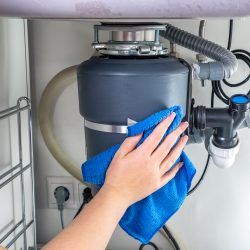
![Stainless steal kitchen sink with water drops, What To Put Down A Garbage Disposal To Clean It [5 Suggestions]](https://kitchenseer.com/wp-content/uploads/2022/06/Stainless-steal-kitchen-sink-with-water-drops-250x250.jpg)
